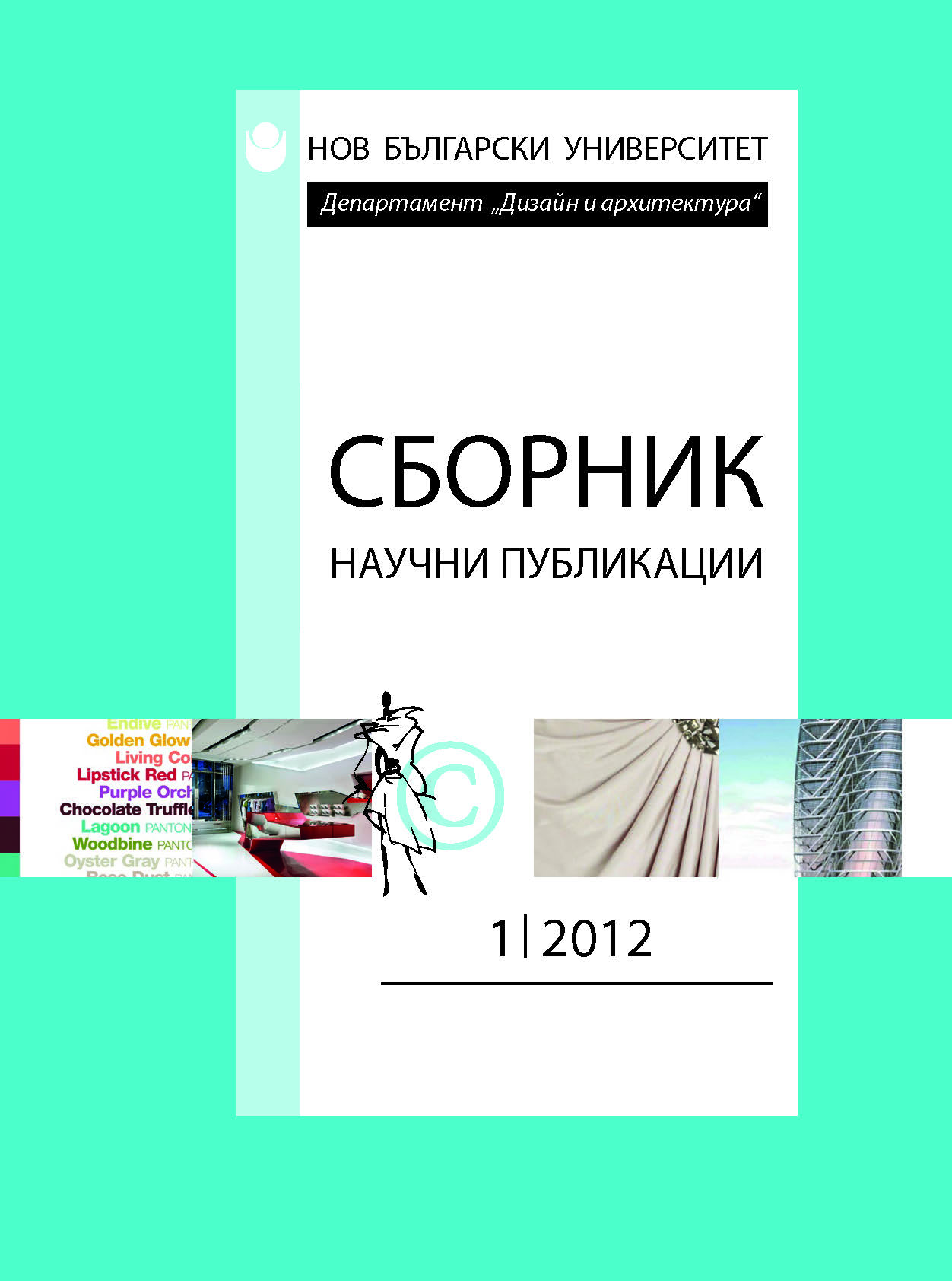
We kindly inform you that, as long as the subject affiliation of our 300.000+ articles is in progress, you might get unsufficient or no results on your third level or second level search. In this case, please broaden your search criteria.






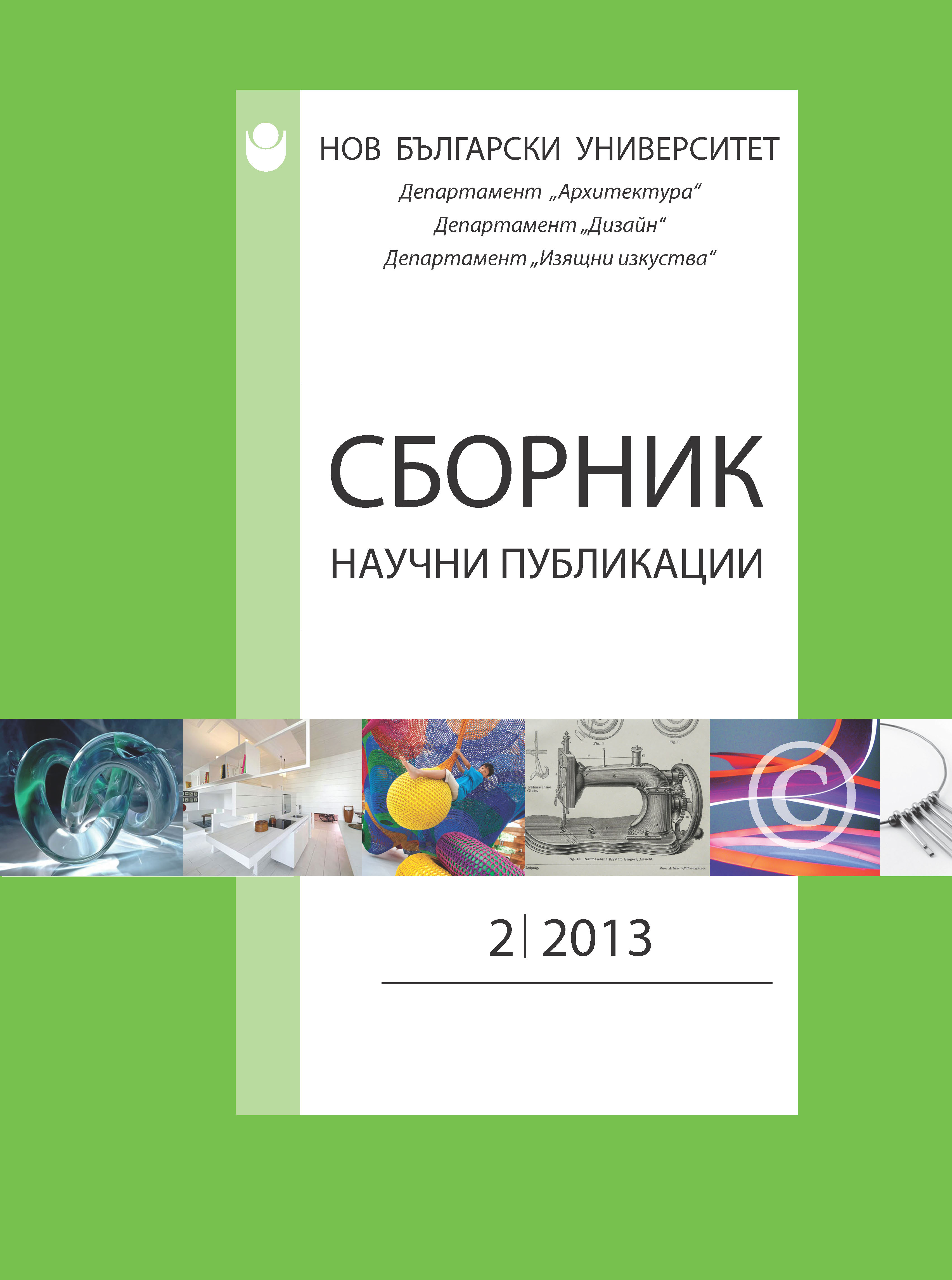
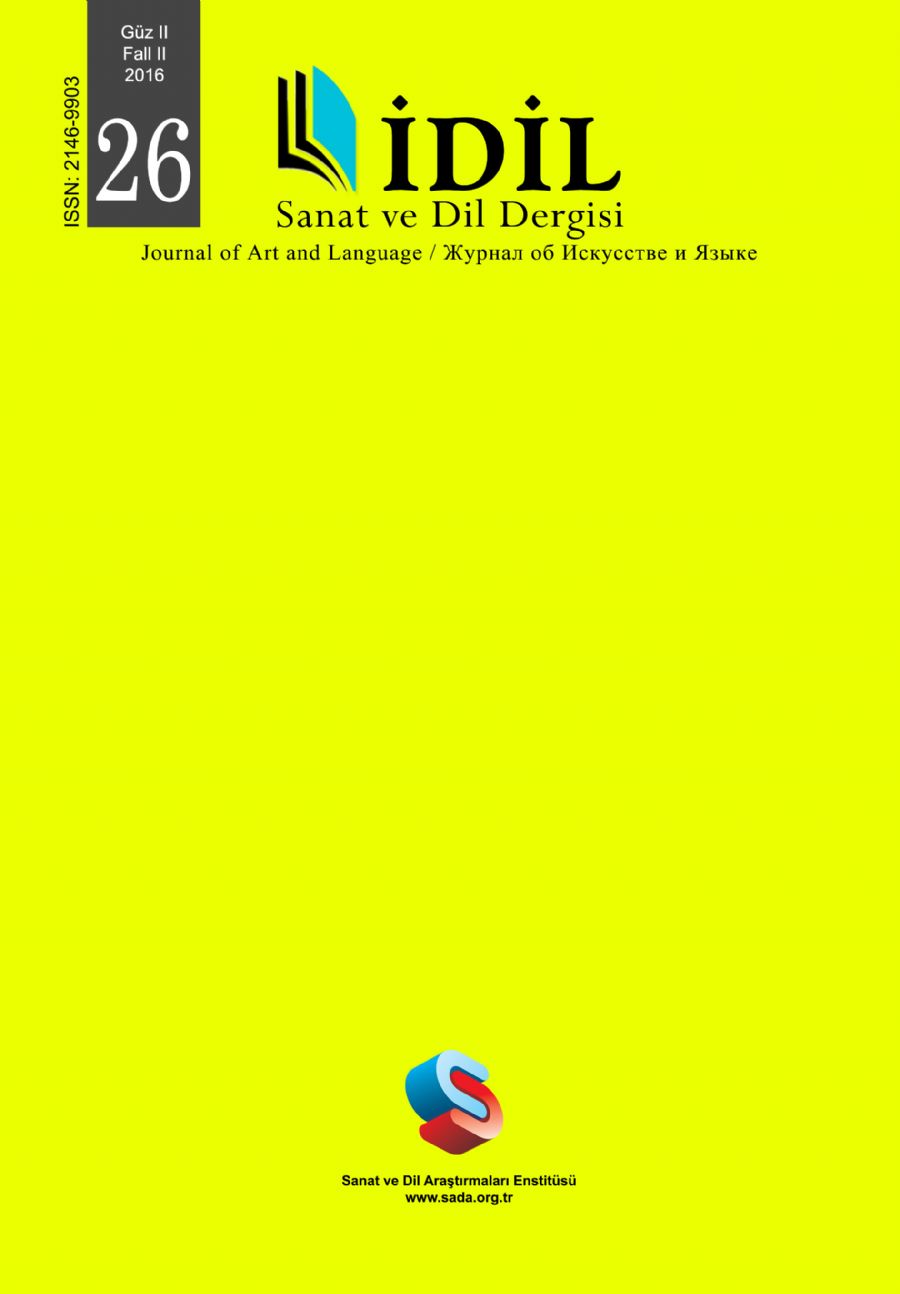
The issue is discussed over "Art ..." titled a painting installation project application and exhibition in graduate art education, as a method examination of how is art and whether to the definition of today's art as one of the conditions of human existence within the framework of the main themes known contemporary art philosophy . With the union of opposites- holistic approach in study, intellectual analysis associate with the issue are made over the practices by New –Wittgensteinism ; views art as an open concept and the basic elements of Wittgenstein philosophy; against the definition of art, as a stance against all identification(institutional, historical, traditional). The purpose of the research is to investigate over the case of "Art ..." titled an art project application in the postgraduate art education area carried out in 2016, Wittgenstein's philosophy, also known as the grammar of silence and its philosophy of bringing to the fore again some basic elements of Neo - Wittgensteinism light is still under investigation, cannot be done whether a holistic definition of art. As a result, those who today live in thought and practice, as well as definitional at this point, the question cannot be made in the definition of art, one of the conditions of human existence, is no longer necessary and obligatory question. Current artistic discussions, always be open-minded to criticism against expanding the definition of art and the latest situation with a holistic perspective to better evaluate the need has been demonstrated in the art project application.
More...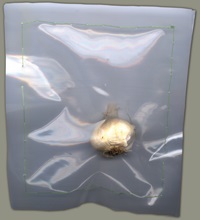
Nakon prvih šest meseci boravka u Americi čeznula sam da osetim neki ukus koji će me podsetiti na dom i bila sam veoma uzbuđena kada sam čula da će u Njujorku nastupiti ansambl Zlatne uste Balkan Bash. Živo se sećam kako sam se pela uz stepenice do trećeg sprata Context Studios na Menhetnu, začula poznate zvuke i osetila poznate mirise. Sva ustreptala stupila sam u bučnu, pretrpanu sobu, vrelu i lepljivu, punu ljudi koji su zbijeni igrali u krugu. Zidovi su bili prekriveni divnim ručno tkanim ćilimima i tapiserijama. […]
More...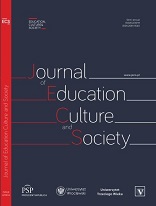
Concept: Drawing is the foundation of plastic arts. The drawing class is one of the art education fields where students focus on observation, questioning, research and developing imagination. It can be seen that artists too are presenting different premises after drawing, which is generally considered as a preliminary to a work of art, being acknowledged as art by itself. Aim: The point of origin of this research is the inability of the students of sculpture departments to fully comprehend the importance of drawing with regard to the creating of a sculpture. The principal purpose is the explaining of the applied studies that are specifically designed to develop individual perspectives, drawing skills, personal lines and creativity of the students and the alternative methods of drawing which yield positive result. Methods: Instead of repeating the knowledge that students obtained via traditional methods, studies are approached where they can reinterpret and develop their knowledge in respect of the time, technique, perception etc. Drawings that are presented in line with the main purpose via innovative approaches are evaluated with a qualitative research. Conclusions: After briefly mentioning education and art education in this study, methods applied with an innovative approach in sculpture design courses are explained through selected examples. At the end of the studies, it was seen that the students were more active, eager to learn, courageous, questioning and every time they are applied, methods are resulted positively.
More...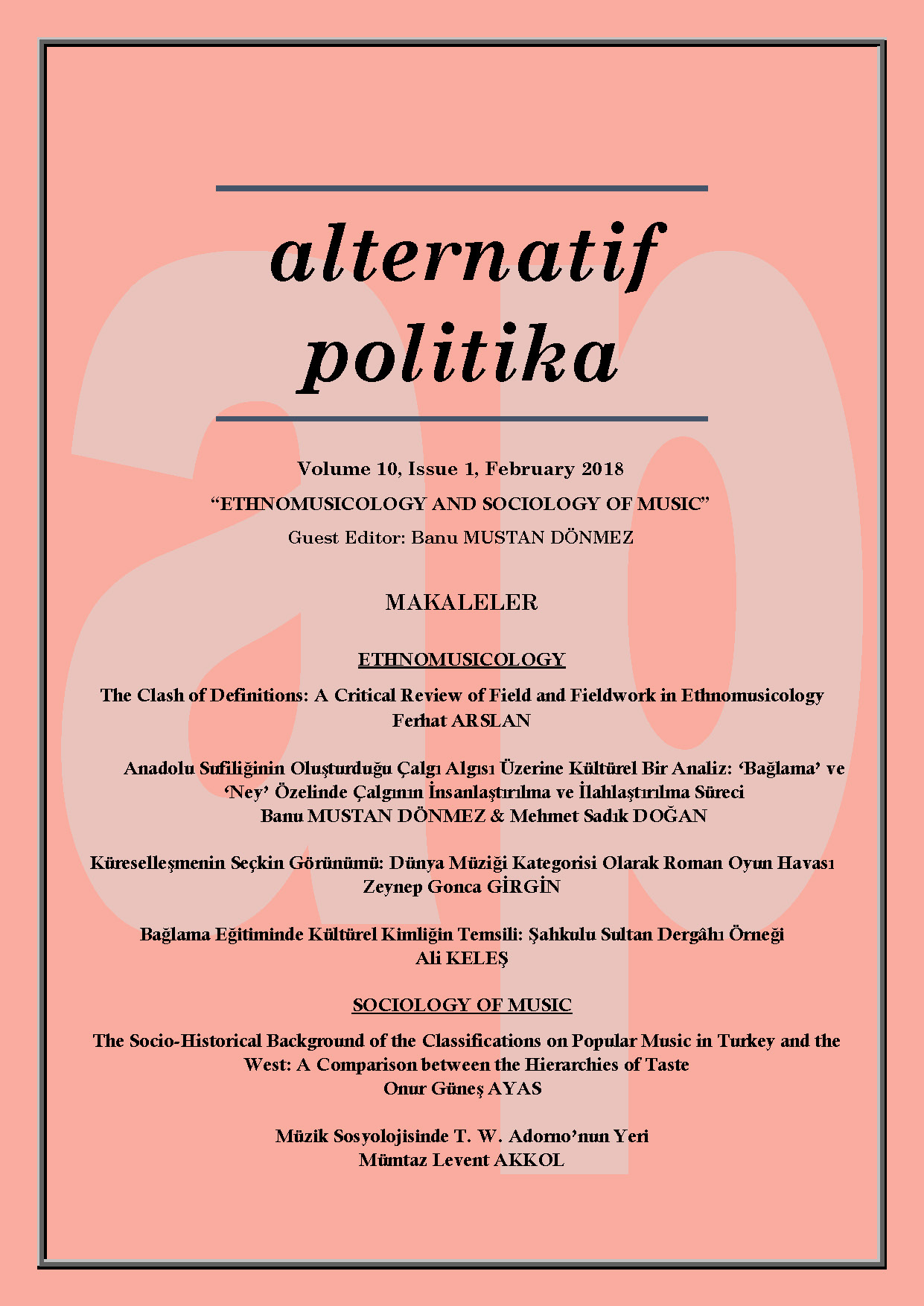
Over the last century, the concept of fieldwork and its implementation in ethnographic disciplines such as anthropology and ethnomusicology have undergone various changes. Following certain political, cultural and social trends, fieldwork is now considered more than a simple data collection method. The positioning of the field, which was mainly in the direction of east and characteristically exotic, gradually loses its validity. Today, geographically and mentally shifting characteristics of the field concept leads the discovery of new horizons and forces researchers to correct their approaches. Through analyzing the established terminology and closely related identity politics, this paper critically reviews ethnomusicological fieldwork and the positioning of its actors.
More...
The theoretical framework built in the West to classify popular music reflects the socio-historical characteristics of the Western societies. This paper argues that this framework is not suitable to understand the music debates in Turkey. Art/popular music (or high/low music) distinction in Western music discourses have reflected a class-based hierarchy of taste. Ottoman-Turkish example differs from this model in many respects. Due to lack of a Western-type aristocracy, land owner ruling class and clergy, Ottoman classical music has developed as a kind of urban music open to all classes of society, exceeding the limits of class-based musical genres and styles. With the start of the Westernization era, however, the East-West distinction reflected in the famous alaturka-alafranga debate has become the yardstick to determine the place of a certain piece of music in the hierarchy of taste built by the Westernizing elites.
More...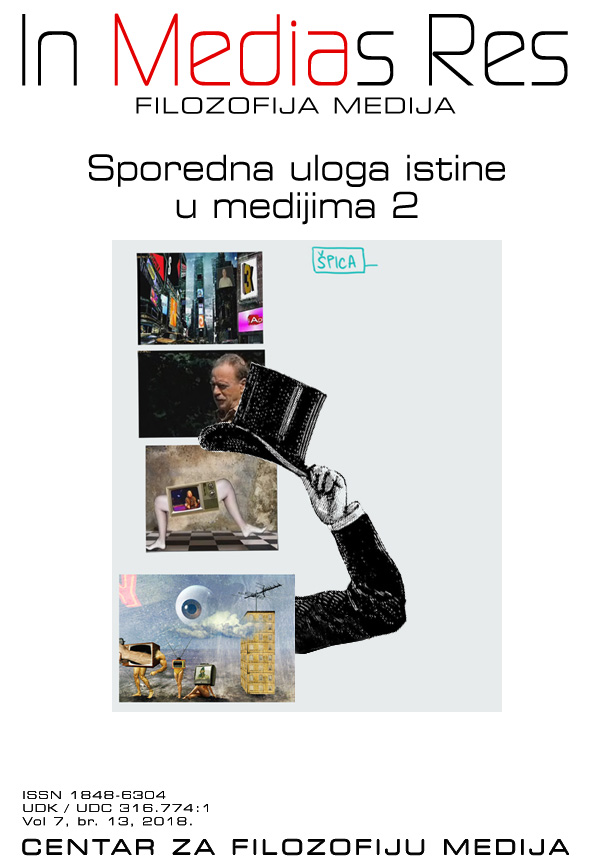
In the era of new media and simulated reality, Buadrillard states, the body still causes and suffers great consequences. As if the bodies no longer belong to us, but rather become independent machines. They become other bodies that no longer need us for survival. In this way, the bodies become duplicated, and so does the identity which is not only less fixed than ever, but also belongs to everybody and everyone. In the late 20th century, there have been significant scientific outbreaks in the fields of genetics and technology. The human body takes on a completely new meaning and form. As complicated as it is, the genetic code can be tested in the standard, structurally stable form which is not subject to disorders and mutations (Houellebecq 2004:366). Art as language event within body language becomes more important than the materialised pieces of art such as paintings, sculptures, text and written music. In its appearance as a lifestyle, the body is already visually constructed. It has a need for clothing, changing styles, intervention and redesign.
More...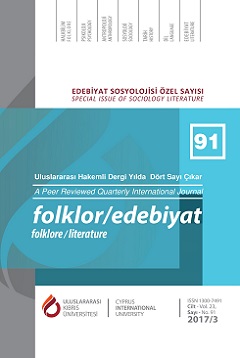
The art of caricature with the sense of humor peculiar to Eastern Black Sea culture is not recent; however, it still reflects the cultural components of the region. When interpreting caricatures as signs, they can be used as data source relevant to social structure. This article is a semiotic analysis on Hamsi magazine, published at the beginning of 1990s. Within the frame of gender-based division of labor, being a woman and man in Eastern Black Sea, where discrimination is internalized with the cultural structure, is interpreted with the side meanings of systems reflected in caricatures in Hamsi Magazine. Besides the representation of the gender in the Magazine, social transformation causing the reflection of the immigration between Trabzon and Sarp Border Crossing in those years in the line is interpreted via caricatures related to the foreign women representation. Thus, the objective of this study is to explain the gender signs represented by the discursive system about the typification and labeling in Eastern Black Sea gender culture. Being a woman, man and foreign woman in the gender-envisioned with the witness of time and space- is analyzed with Ronald Barthes’s semiotic approach indicating that the signification presents itself with certain functions and is being constructed via signs.
More...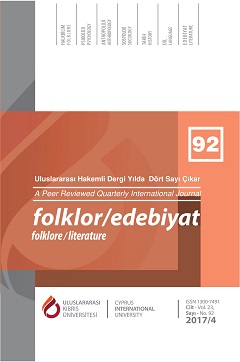
This study is based on the argument that the philosophy of humanity should form the basis of the road map of music education. Giving professional music education which is provided by conservatories such as training virtuoso or compositor, certainly not other institutions’ aim. In this study, the approach to the most general types of music education has been dealt with in terms of reasons This study is a descriptive / interpretive study carried out through literature review / library study and qualitative research method. Music education in this study is seen as one of the important instruments of human education, exactly like in the philosophy of Greek Antiquity and Plato philosophy. It should be the main goal of music education that training the spirit, increasing sensivity, civilizing the spirit by way of aesthetics; it should be the main goal of music education that purifying the spirit from animalism, increasing emotional intelligence, commiseration, empathy and virtue. In fact, educating the people is the common aim for all religions, philosophies and arts, this supreme goal is to create a better world. Here it is much more effective and easier to reach this aim through music than other methods. Because music affects the soul quickly and profoundly, it plays a part in all areas of life like propaganda, war, work and work motivation, love, lament, religious rituals. Therefore, music performs education more effectively and quickly. Most importantly, music is one of the arts that most connected to creativity. Music that covers different areas such as literature, poetry, decor, costume, drama especially in universal arts, should not be imposed upon children and adults forcibly if they do not love in this area; if they love this area they should be supported with special incentives. In addition, those who thought that they are music lovers and have no talent should never be taken away from this area; because love in music is more miraculous than special talent. For this reason, the only art that reduces to the minimum level the barriers of disabled and mentally unbalanced individuals is the music, and it has been attributed to itself the sanctity since Antiquity. Apart from that, in order to be able to work based on love and desire in the music education, the specific inclination and the cultural orientation of the individuals should not be left out, a single musical culture should not be forcibly imposed, in the world, which becomes a global village where ethnic colors have emerged. Such imperatives are incompatible with the idea of love education and humanity in music.
More...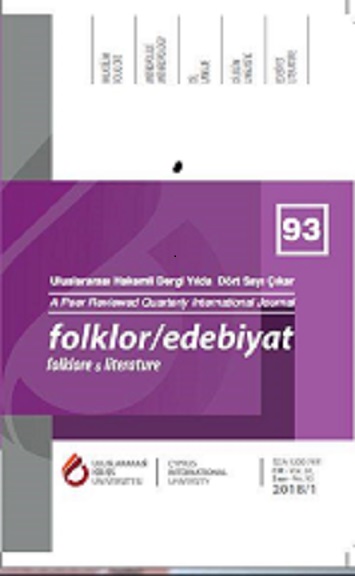
There were some places in the entertainment life of Ottoman addressing to various cultural levels and nearly all of them were musical in nature. Coffee houses as one of these places differ from the other musical entertainment places because of the fact that it has its own varieties as well. And this causes a reason for the purpose of examination of the coffee houses. While there are many researches which were previously carried out and performed on such coffee houses, it is obviously seen that not much researches were carried out on the Amane Coffee Houses. The main subject of this article is the subcultural characteristics within the social class network of the Amane Coffee Houses as one sort of the musical coffee houses in the entertainment life of Ottoman. The difference of the Amane Coffee Houses among the musical coffee house types and what kind of musical and cultural structure it has became the fundamental problem of this study as well. Starting from the fundamental problem in the article, the penetration of the concept of coffee house as a cultural element is evaluated and assessed as it shows its asset in the entertainment and conversation place identity while formed surrounding the coffee drinking habit in the outside social life in the Ottoman period and then the main peculiar characteristics of the Amane Coffee Houses have been determined and specified properly. The genre, form and performance versions of music in the coffee house culture and also the musical characteristics of the Amane phenomenon are also stated, specified and depicted in details. The musical elements of these musical coffee houses, the identities of the performers and why they have a subculture are in the coverage of this study as well. The data of this study in the frame of the historical method of musicology have been gathered together by means of the literature scanning technique and the resources reaches were analyzed properly and the appropriate data were assessed and evaluated in the end. According to the findings obtained, Amane is determined as a multicultural entertainment place and musical genre based on the subculture.
More...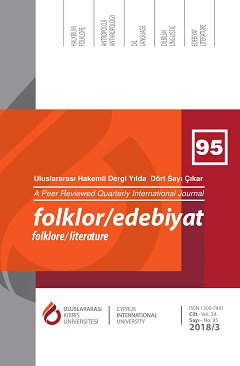
Researching the audience in the field of film studies, mostly criticized as being textcentered. That’s why the concept of researching and understanding audience has evolved from “film” to more inclusive concept called as “cinema”. The spectator watches the film, receives and makes a sense of it. But beyond that, while the spectator comes to the cinema hall and watches the film on various conditions and contexts, he/she interacts with other audiences in the cinema, and has a different set of actions on the way to cinema. This process, called the experience of cinemagoing, varies in different historical, social, economic and cultural contexts. This article, based on the project which is supported by TUBITAK and titled “Cinemagoing as a Cultural and Social Practice: An Oral History Study on Spectators’s Experiences in Turkey 1960s’ and 1970s” with number 115K269. This paper also describes the mass audience watch cinema films in Turkey increasingly based on the 1960s and 1970s and focuses on the oral history interviews process used to identify and explain the spectator experiences these years. In the article, which deals with the ethnographic experiences that are collected based on the axis of the researcher and spectator while working with the audiences in the field, through oral history interviews with hundreds of people in Istanbul, Ankara, Antalya and Kocaeli, both the spectator experiences in field and the experiences lived by the researchers while they were working with the spectator were interpreted in a self-reflexive way.
More...
This article is inspired by the idea of a transnational art world focused on migrants and the visual arts and it delivers a preliminary theoretical discussion. The article discusses the notion of ‘transcultural capital’ as a perspective within the study of contemporary migrations of artist. It also looks at the concept of ‘cultural scenes’ as places of significant cultural and artistic activities and amenities. Linked to these are ‘transnational artistic practices’ and the production of translocal geographies drawn by an overlap of the migratory destinations of artists and networks of places of creation, production and artistic dissemination which enhance different art markets. This article discusses the ways in which these different theories can contribute to our understanding of the mobility of cultural professionals and, in particular, of the emigration of Portuguese visual artists.
More...
By highlighting the Brazilian context as the analytical approach; this article gathers data on the impacts on music consumption brought by the development of the phonographic industry. Since the emergence of the phonograph in the late 19th century until the revolution brought by the digitization and sharing of files in the first decade of the 21st century, this research presents, chronologically, the main devices for sound reproduction or physical music supports that have appeared within this time period, thus creating a record of the technological evolution in the phonographic industry in the 20th century. This article targets the present-day reconfiguration of the means of production and distribution of music, as well as its means of consumption and some of its effects on the industry, the artists and users.
More...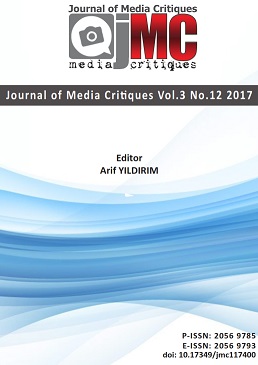
Through student essays, this study examined the likability that young adults in the US had for television and/or film characters—both fictional and/or real—across three scenarios: (1) with a disliked character who shared the ethnic or racial identity of the participant, (2) with a likable character who was an ethnic or racial minority characters, and (3) between their utmost liked and disliked TV/film character regardless of their ethnic/racial identification. The likability of TV or film characters was dependent on their inner attractiveness – a characterization based on selflessness, friendliness, and interpersonal empathy. Ethnicity and/or race became a salient factor for ethnoracial minorities when they wrote about dislikable ingroup characters, because these social identities were associated with outer unattractiveness – that is, characterizations relating to appearance and speech that stereotyped and devalued them in the narrative. When asked to contrast likable and dislikable characters, participants rarely questioned them according to ethnic or racial qualities, and social identities like gender was likely to guide their discussions. Study findings captured the onscreen marginality that ethnic/racial minorities and/or face, and the manners in which audiences shift between personal and social identities to make sense of media experiences.
More...